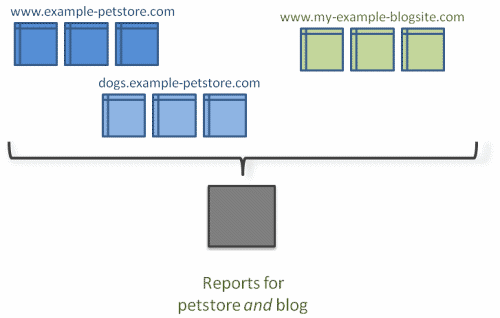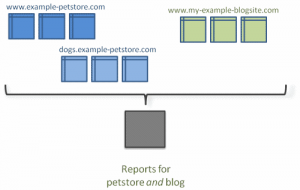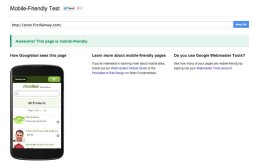Google Analytics – What is “Cross Domain Tracking” and Why Do I Need It?

Savvy marketers understand the importance of website analytics. Because Google Analytics is very powerful and free to use, it has the lion’s share of the market. As your website becomes more of your business’ ecosystem, you may rely on several different services to provide customers with the content they need. For example you may have these types of URLs already in use: 
Homepage: www.yourcompany.com
Storefront: store.yourcompany.com
Blog: blogspot.yourcompany.com
Forum: forumsoftware.yourcompany.com
While it would be great if all of these services were on a single URL, this may not be possible when selecting best of breed vendors. In the past the requirement for having multiple URLs has caused headaches when trying to accurately analyze your website traffic. This is where Cross Domain Tracking comes in.
Cross Domain Tracking is a tool provided by Google Analytics that enables you to identify which URLs belong to your company and treat each URL as if they were all a single website. This means that when a customer jumps from your Homepage URL to your Blog URL to your Storefront URL, they are accurately tracked as a single visitor across the multiple domains versus a visitor who exited one site and entered the next.
While Google has made some improvements recently on the set up for Cross Domain Tracking, configuring your Cross Domain Tracking can still be a bit tricky and can vary based on the service you’re trying to accurately track. Google has some helpful documentation here: Google Analytics Support
However, you may still need to work with your web designer, eCommerce manager, etc. to ensure it’s properly set up. For the do it your-selfer, a good starting point is to visit Admin/Tracking Code in your Google Analytics account and enable cross domain tracking.
One thing almost all business owners realize is that analyzing your website traffic is extremely important and in the past it was somewhat challenging or even impossible for a novice to ensure that they were accurately tracking their customer’s behavior when they jumped from one domain to another. Cross Domain Tracking helps solve this problem for you and allows you to gather the information you need to help maximize your online business.














